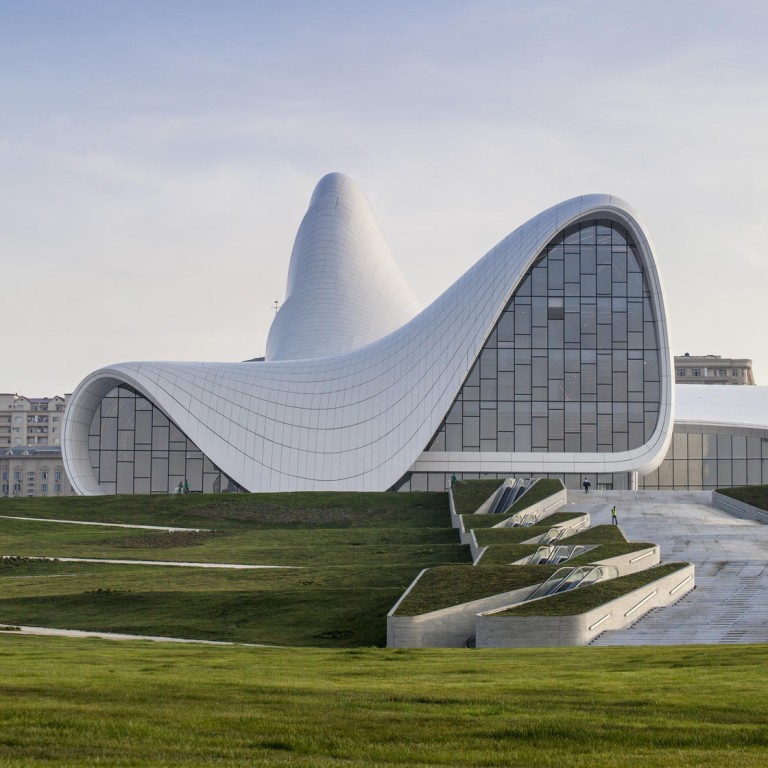
Book review: 100 Contemporary Concrete Buildings - concrete's finer side
Concrete is the most maligned of building materials, shorthand for man-made soullessness. The stuff of which cities are made, it's cheap, it's everywhere, and it goes into the making of nearly all of our most unappealing buildings. Yet it's also the most versatile and malleable of materials, and has been used in architectural masterpieces.


Concrete is the most maligned of building materials, shorthand for man-made soullessness. The stuff of which cities are made, it's cheap, it's everywhere, and it goes into the making of nearly all of our most unappealing buildings. Yet it's also the most versatile and malleable of materials, and has been used in architectural masterpieces.
showcases some of them.
It may seem quintessentially modern, but concrete has ancient origins; the Roman Pantheon, for example, is mostly made from it. The invention of reinforced concrete in the late 19th century, though, paved the way for an explosion in concrete buildings throughout the 20th, from the banal to the sublime. Concrete's more enticing possibilities were first explored in 1913 with Paris' Théâtre des Champs-Élysées, and the material has since been used in everything from the Sydney Opera House to the Bilbao Guggenheim.
, produced in Taschen's lavish and professional style - and so large and heavy, it feels as if it's made of the material - features buildings designed by 73 modern architectural galácticos including Tadao Ando, Zaha Hadid, Herzog & de Meuron, Toyo Ito, Richard Meier, Oscar Niemeyer and Renzo Piano. (There are also several from China, including Beijing's Pei Zhu, Shenzhen's Urbanus and Vancouver-based Bing Thom.)
Split into two giant coffee-table hardbacks, it features a chunky section on each of the buildings starting with a fact-heavy architect bio, a brief write-up about the building and several pages of beautifully shot, well-captioned photos, plus architectural drawings. Many of the projects are physically imposing: Singapore's Marina Bay Sands resort by Moshe Safdie, for example, with its gravity-defying Skypark; or Ando's Roberto Garza Sada Centre for Arts, Architecture and Design in Monterrey, Mexico - a vast, soaring slab that fans out above a bucolic landscape in a kind of anti-brutalist monumentalism, finding the beauty in concrete rather than embracing its ugliness.
Yet others are small and surprisingly subtle, such as the charming seven-metre-high CCV Chapel in Tagaytay in the Philippines, a folded line of small interlocking, overlapping concrete pillars that look like an irregular set of keys from a misshapen piano.
The most successful buildings explore the possibilities concrete affords for contrasting lightness with heaviness, chunky slabs with airy openings and windows, light with shade, and contrasting materials with each other.
Hadid's work, as ever, stands out from the punch-card-dot windows and disorientating lines of the Phaeno Science Centre in Wolfsburg, Germany - 27,000 cubic metres of concrete suspended seven metres above the ground on a series of cones - to the bucking dragon of Sheikh Zayed Bridge in Abu Dhabi and the surrealistic melted skatepark of Heydar Aliyev Cultural Centre in Baku, Azerbaijan.
There's plenty in that's equally futuristic. Check out the cool, spacey warpings and apparently impossible interior angles of Chiaki Arai's Niigata City Konan Ward Cultural Centre in Japan. But the book also shows concrete defying the expectation that it will clash with natural forms. Barclay & Crousse's Vedoble Houses in La Escondida, Peru, appear to rise out of the arid, sandy landscape as if they've been blown there by the wind, and Reiulf Ramstad's Selvika and Trollstigen National Tourist Routes along the Norwegian coastline look as if they've were dropped there millennia ago by Norse gods.
One man's pioneering vision is another man's carbuncle, of course, and there are few cultural subjects likelier to raise the hackles of traditionalists than modern architecture. But for those people who still need convincing that concrete can indeed be beautiful, might just do the trick.
100 Contemporary Concrete Buildings edited by Philip Jodidio (Taschen)

